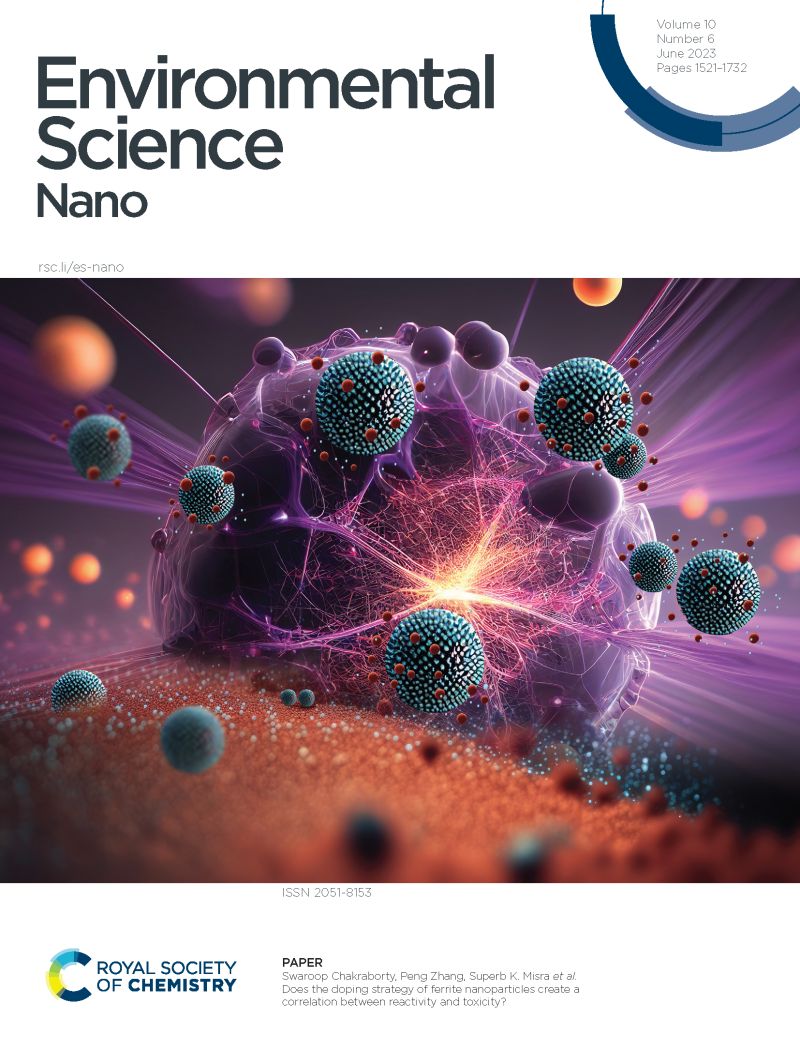Optimizing ZnO nanoparticles basal application for enhancing rice yield, quality, and zinc enrichment
IF 5.8
2区 环境科学与生态学
Q1 CHEMISTRY, MULTIDISCIPLINARY
引用次数: 0
Abstract
Zinc (Zn) oxide nanoparticles (ZnO NPs) have been increasingly utilized in agriculture as an innovative Zn fertilizer, prompting numerous studies to assess their impact on plant growth. However, research on the optimal application methods and dosages of ZnO NPs on rice remains limited. In this study, varied basal application dosages (0, 3.75, 7.5, 15, 30 and 60 kg hm-2) of ZnO NPs on rice yield, quality, and grain Zn content and distribution were investigated using field experiment in 2022 and 2023. Control experiments were also conducted including treatments without Zn application and those ZnSO4 applied at the same Zn dosage. Results showed that ZnO NPs and ZnSO4 application led to increases in rice grain yield of 0.34-0.50 t hm-2 and 0.06-0.40 t hm-2, respectively, over the two-year experiment compared to the treatment without Zn application. Furthermore, ZnO NPs improved rice quality by enhancing the head rice rate, reducing chalky grain percentage, and improving taste value and rice breakdown. The application of ZnO NPs significantly elevated Zn content in both milled and brown rice compared to the control. In 2022, Zn content in milled rice increased by 20.79%-41.67% and in brown rice by 25.20%-47.31%. In 2023, the increases were 12.18%-32.18% in milled rice and 17.68%-38.66% in brown rice. However, the utilization efficiency of ZnO NPs decreased from 7.02% to 1.26% as the application dosage increased from 3.75 kg hm-2 to 60 kg hm-2. Despite this decrease, the efficiency remained higher than that of ZnSO4 at the same Zn dosages. Considering yield, rice quality, Zn fertilizer utilization, and Zn accumulation, a basal application of 7.5-30 kg hm-2 ZnO NPs is optimal for improving rice yield, quality, and Zn accumulation. This study effectively demonstrated that ZnO NPs could serve as a highly efficient fertilizer for synergistically enhancing rice yield, quality, and Zn content in the edible grain fraction.求助全文
约1分钟内获得全文
求助全文
来源期刊

Environmental Science: Nano
CHEMISTRY, MULTIDISCIPLINARY-ENVIRONMENTAL SCIENCES
CiteScore
12.20
自引率
5.50%
发文量
290
审稿时长
2.1 months
期刊介绍:
Environmental Science: Nano serves as a comprehensive and high-impact peer-reviewed source of information on the design and demonstration of engineered nanomaterials for environment-based applications. It also covers the interactions between engineered, natural, and incidental nanomaterials with biological and environmental systems. This scope includes, but is not limited to, the following topic areas:
Novel nanomaterial-based applications for water, air, soil, food, and energy sustainability
Nanomaterial interactions with biological systems and nanotoxicology
Environmental fate, reactivity, and transformations of nanoscale materials
Nanoscale processes in the environment
Sustainable nanotechnology including rational nanomaterial design, life cycle assessment, risk/benefit analysis
 求助内容:
求助内容: 应助结果提醒方式:
应助结果提醒方式:


